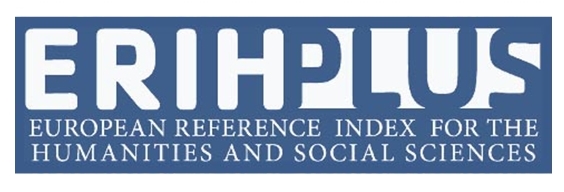Main Article Content
Dec 22, 2022
Abstract
In recent decades, tackling complex problems has encouraged the development of research that brings together experts from various disciplines. However, the procedures and methodologies that lead to successful results continue to be part of the black box of research. The dynamics of the research groups, the disciplines involved or simply the commitment of those who make up these teams often justify successful results or explain the obstacles. The aim of this paper is to describe analytically experiences and strategies of interdisciplinary work carried out in the framework of a research on intangible cultural heritage. From the description of these strategies in a concrete case, we try to extrapolate elements that may be feasible in other research projects in order to achieve results in complex problem situations.
Downloads
Policies for open access journals
Authors who publish here accept the following terms: Authors will keep their copyright and will guarantee the journal the right to the first publication of their work, which will be subject to the Licence of Creative Commons acknowledgement, which allows for the use of this material only if the authorship is credited and the original source is acknowledged (the journal’s URL), and if it is not used with commercial ends and with any derivations of the original work.
Authors may adopt other non-exclusive license agreements of distribution of the published version (e.g. to save it onto a digital institutional archive or publish it in a monographic volume) only if the initial publication of this journal is indicated.
It is permitted and recommended for authors to divulge their work on the Internet (e.g. institutional digital archives or webpage) before and during the submission process, which may lead to interesting exchanges and increase the citations of the publication. (See Open Access Effect).
References
Arantes, A. (2017) O que é Cultura Popular. São Paulo: Brasiliense.
Ariño Villarroya, A. (2002). La expansión del patrimonio cultural. Revista de Occidente, (250), 129-150.
Apostel, L., Berger G., Briggs A. y Michaud G. (1975) Interdisciplinariedad. Problemas de la enseñanza y de la investigación en las universidades. México: Bilblioteca de la Educación Superior, ANUIES.
Bammer, G. (2005) Integration and Implementation Sciences: Building a New Specialization. Ecology and Society, 10, (2), 95-107.
Bianchi Villelli, M.; Scartascini, F.; Vargas, F.; Caracotche, M.; Hajduk, A. et al. (2020) Investigación interdisciplinaria y Gestión colaborativa del Patrimonio Cultural en el PNNH: Avances en el caso de la Estancia Fortín Chacabuco; Parque Nacional Nahuel Huapi. Departamento de Conservación y Educación Ambiental. Macroscopia, 10 (9) 9-14. Recuperado de: https://ri.conicet.gov.ar/handle/11336/147344
Bijker, W. (2009) La tecnología tiene que encajar en la sociedad. Entrevista a Wiebe Bijker. Revista Ñ, 15/10/2009. Recuperado de: http://www.clarin.com/notas/2009/10/15/_02019450.htm [consultado el 09/08/2010]
Bortolotto, C. (2014) La problemática del patrimonio cultural inmaterial. Culturas. Revista de Gestión Cultural. 1, (1) 1-22.
Collins, H.; Evans, R. y Gorman, M. (2007) Trading zones and interactional expertise. Studies. Studies in History and Philosophy of Science. (38), 657–666.
DaMatta, R. (1987) La cultura de la mesa en Brasil. Correo de la UNESCO, Mayo 1987.
Echeverría R. (2010) Actos del lenguaje. Volumen I: La escucha. Buenos Aires: Granica.
Espeitx, E. (2004) Patrimonio alimentario y turismo: una relación singular. Pasos: Revista de Turismo y Patrimonio Cultural. 2 (2) 193-213.
Flórez–Malagón, A. y Millán de Benavides C. (2002) Introducción. En: Flórez–Malagón F. y Millán de Benavides C. (eds.) Desafíos de la transdisciplinariedad. (pp. 3-19) Bogotá, Colombia: Universidad Javeriana.
Follari, R. (2005). La interdisciplina revisitada. Andamios, 1(2), 7-17. Recuperado de: http://www.scielo.org.mx/scielo.php?script=sci_arttext&pid=S1870-00632005000300001&lng=es&tlng=es
Knorr Cetina, K. y Reichman, V. (2015) Epistemic Culture. International Encyclopedia of the Social Behavioral Sciences, (7) 873-880.
Leigh Star S. (2010) This is Not a Boundary Object: Reflections on the Origin of a Concept. Science Technology and Human Values, 35 (5) 601-617.
Lins Ribeiro, G. (2004) Descotidianizar. Extrañamiento y conciencia práctica, un ensayo sobre la perspectiva antropológica. En: Boivin, M; Rosato A.; Arribas V. (Ed.) Constructores de Otredad. Una introducción a la Antropología Social y Cultural (pp. 194-198) Buenos Aires: Antropofagia.
Maturana H. (2010) El sentido de lo humano, Buenos Aires: Granica.
Maciel, F. (2001) Lo posible y lo imposible en la interdisciplina. Desenvolupa: la Revista d’Atenció Precoç, (17-18) 1-8.
Mugueta, M. y Guerci, N. (2018). Problematizaciones sobre el patrimonio cultural en una investigación interdisciplinaria de arqueología histórica. Revista De Arqueología Histórica Argentina y Latinoamericana, (12), 1144-1163. Recuperado de: https://www.plarci.org/index.php/RAHAYL/article/view/236
Nowotny, H. (2011) ¿Salirse de la ciencia es salir de sincronía? En AAVV Informe sobre las ciencias sociales en el mundo, Las brechas del conocimiento (pp. 337-340). México: UNESCO y Foro Consultivo Científico y Tecnológico.
Sandoval, J. y Donoso A. (2018) Investigación interdisciplinaria en cultura política, memoria y derechos humanos. Centro de Estudios Interdisciplinarios sobre Cultura Política, Memoria y Derechos Humanos, 1er Cuaderno de Investigación. Disponible en: http://repositoriobibliotecas.uv.cl/handle/uvscl/4565






